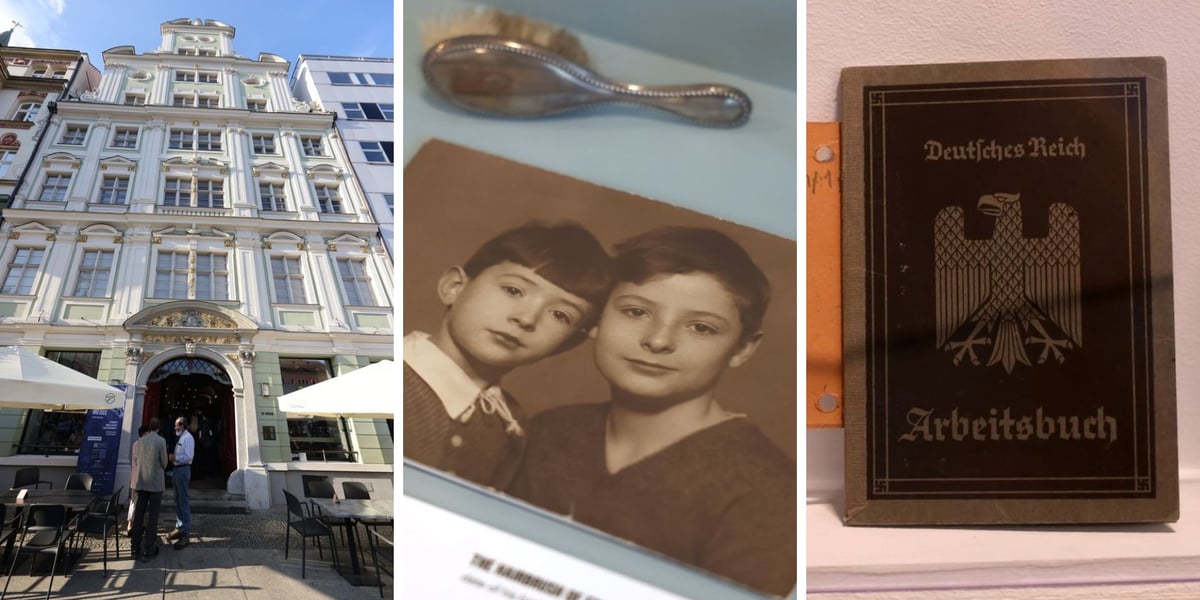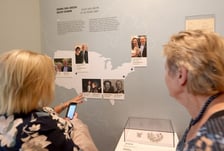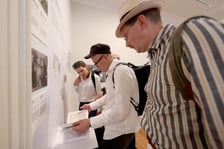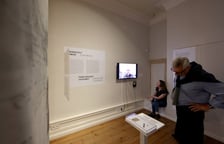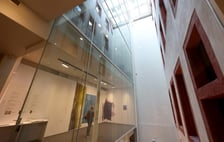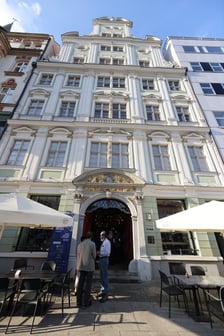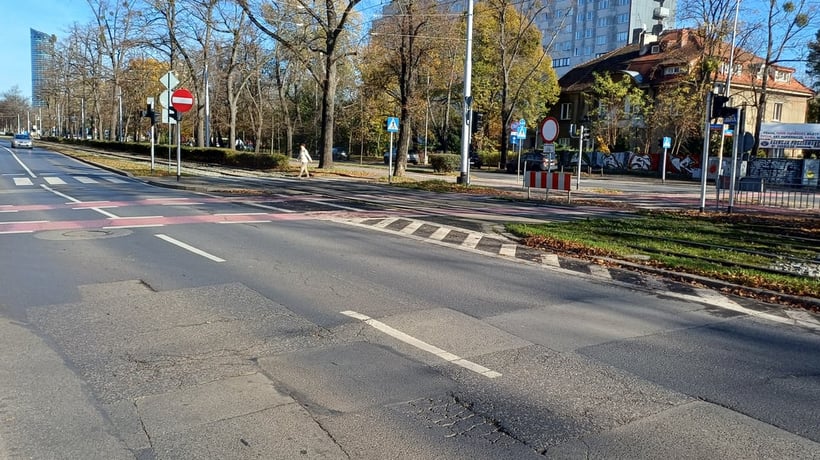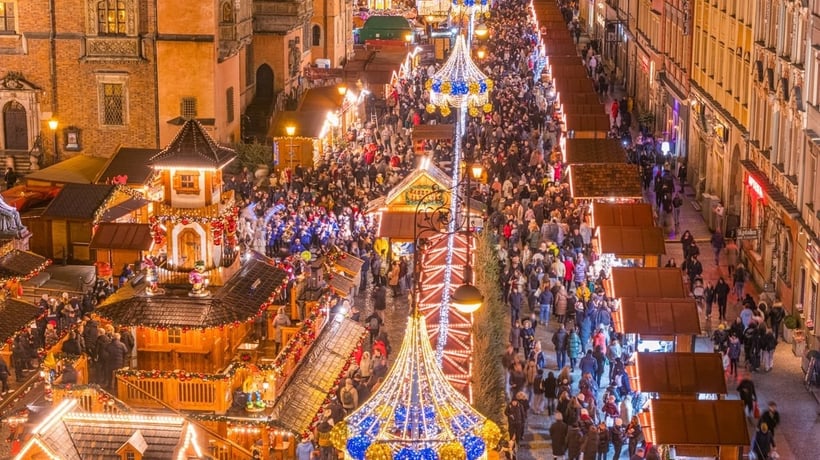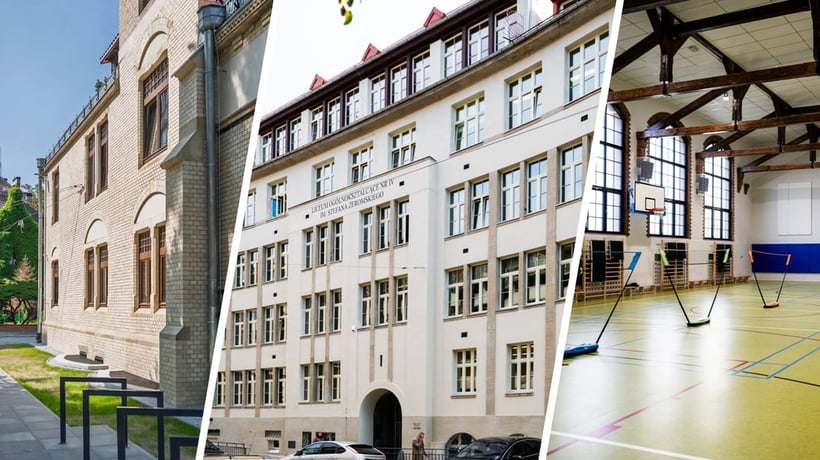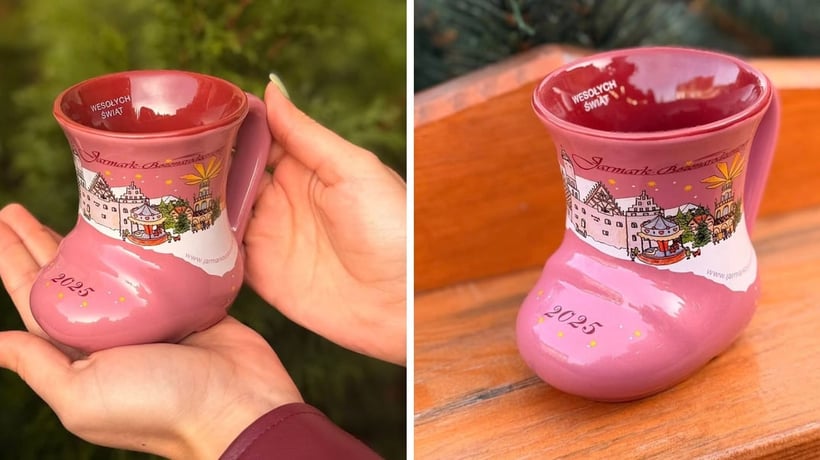Items from Breslauers’ suitcases return to the place
We should put things back where they belong – a natural and logical action that is instilled in us already in childhood by our grandparents and parents. When keeping things in order, we reach for objects automatically, and their existence in a specific fixed space helps us bring order to the chaos of life and to introduce stability.
Sometimes putting things back is impossible, especially when their owners disappear and reality changes around them.
At the exhibition Putting Things Back. Jewish Breslauers and Their Objects at the OP ENHEIM House for Culture, we will see how the story of their owners and a dramatic chapter in the history of the city can be told through objects.
But we will also feel how the things once taken away in suitcases – which have returned to their place in Wroclaw (even if only for the period of the exhibition) after years – reconnect the former Breslau with today’s Wroclaw.
‘Our exhibition is an attempt to re-establish ties that have been artificially broken and against the will of the owners of these objects who were forced to leave Wroclaw. As a result of the war, the city was destroyed; this was followed by the complete replacement of the population, and German Breslau became Polish Breslau. Although the exhibition focuses on Jewish inhabitants, it allows us to see this phenomenon much more broadly,’ explains Karolina Jara of OP ENHEIM.
The exhibition was prepared in conjunction with the Urban Memory Foundation, which is dedicated to nurturing the memory of Wroclaw’s pre-war Jewish population.
For years, the UMF’s members have established contacts with descendants of Jewish Breslauers, and 12 families of former Breslau residents have also made specific objects available for the exhibition Putting Things Back in Their Place.
A silver tiara for a wedding anniversary
Some of the objects were subjected to the conservation processes, such as the 19th-century portrait of Babette Silberstein belonging to Stephen and Donald Falk, or the silver tiara and brooch of the Freund and Falk families.
‘At the end of the exhibition, the objects will return to their owners – the descendants of the families who took them out of Breslau. And they will continue to fulfil certain functions for them,’ says Karolina Jara.
And the objects rescued from Breslau are unique for the heirs. The aforementioned silver tiara and brooch of the Freund and Falk families circulates in the family and is worn by couples who are celebrating their wedding anniversary. ‘It is a tradition that has been created and nurtured by this particular family,’ says Karolina Jara.
Babette Silberstein – from Brzeg to Breslau
A painting in olive and cream colours. It depicts a comely brunette with an intricately styled hairstyle and a fashionable dress with puff sleeves.
Little is known today about Babette Silberstein apart from the fact that she and her husband came to Breslau from Brzeg. The husband soon became the founder of the White Stork Synagogue and also commissioned a portrait of his wife. Sadly, Babette died during a cholera epidemic in Breslau in the late 1840s and was buried in the graveyard at Gwarna Street.
The portrait passed from hand to hand, hanging in the apartments of particular family members. Then, when the time of persecution came in the 1930s, he left with the Silbersteins’ descendants for the United States.
There the painting was unsuccessfully conserved. ‘Unsuccessful because the person who remembered him from childhood said it was not the same portrait. On the occasion of the exhibition at OP ENHEIM, the portrait was subjected to further conservation in order to restore its former paint layer.
The portrait of Babette Silberstein was made available for the exhibition by Stephen Falk and Donald Falk, who live in the United States. Donald visited Wroclaw for the first time in 1996. He accompanied his mother, who was born in Breslau.
‘With each visit, I felt a greater bond and intimacy with this place. And the fact of bringing something I value to Wroclaw is a way of honouring my family, who has lived here for generations. I think the exhibition broadens the sense of the place by including the details of life that took place here in the past,’ he said before the exhibition.
Accumulation of successive layers of history
The layers built up over the years is one of the leitmotifs of the exhibition Putting Things Back in Place. As we enter the first room, we see a display case with two mezuzas.
Small boxes containing scrolls of parchment with a fragment of the Torah were nailed to apartments and houses at the entrance. According to tradition, people crossing the threshold (inhabitants and visitors) should have touched the mezuzah with their hand.
The mezuzahs displayed in the exhibition were found in door frames during the renovation of the building. ‘We do not know to whom they belonged. We can only assume that they were connected to the Oppenheim family or subsequent residents of the tenement house. This is an important testimony to the fact that there were many Jewish tenants in this building,’ points out Karolina Jara.
In one of the rooms (in the new part of the building), there is an artistic intervention by Berlin-based artist Anna Schapiro. She worked in the gallery using the technique of imprinting rice paper soaked in different coloured inks.
‘The irregular compositions that have remained on the walls will be painted over after the exhibition. They will appear as another layer of history, although we will not see them anymore,’ explains Karolina Jara.
Schapiro dedicated her work to all those who could not take anything along when leaving Breslau.
Breslauers are leaving – what they are taking along
At the end of 1939, 13,000 Jews lived in Breslau; a year later more than 550 emigrated, and in 1941 it was already practically impossible to leave, according to Wroclaw historian Joanna Hytrek-Hryciuk, PhD, in her book Between Private and Public. Everyday Life in Breslau 1938-1944.
If forced emigration is spread over time, the Breslauers could make provisions and plan their departure. Designed and made by Albert Hadda, the table and chairs were adapted to life in exile for the Goldschmidt family who went to the British Mandate of Palestine.
Manufactured in Breslau, the symphonion (audio equipment playing music from tin plates) was a conscious choice, as was the kilim with Noah’s ark that hung in the children's room.
The objects taken along most often were photographs – both private ones (from holidays, with family, with children) and those from studies (Berta Simlinger, later the wife of Albert Hadda, kept a photograph with her fellow students from the State Academy of Arts and Crafts) or the workplace (Willy Cohn kept a photograph with students and the headmaster of St John’s Gymnasium, at today’s Worcella Street).
‘Being easy to take along, photographs and letters were an obvious choice, especially in those days. The images of the loved ones helped them keep their faces in memory,’ says Karolina Jara.
But among the objects taken from Breslau there were portraits, paints and brushes that the wife of the late painter and architect Heinrich Tischler took with her.
She also removed the plate from the door of his studio with a facsimile of her husband’s original signature and kept the artist’s postcard sent from the Buchenwald camp, where Tischler had been deported. After his return from the camp, he never recovered and died in the autumn of 1938.
Documents of disgrace and exclusion
At the exhibition Putting Things Back in Their Place, curators Malgorzata Stolarska-Fronia, PhD, and Maciej Gugała, PhD, highlighted successive changes of reality for the Jewish population.
From the Emancipation Edict of 1812, when Jews became full citizens, they were allowed to study at universities, sit on city councils and hold public offices until the 1930s, when Nazi persecutions and repressions began.
The fact that the Breslauers took along many documents being evidence of the disgraceful policy of the Third Reich testifies to how unfairly treated they felt.
Historian and teacher Willy Cohn was forced to add the name ‘Israel’ (Dr. Willy Israel Cohn).
‘The Jews were stigmatised in this way. Cohn’s stamps with the changing name are small yet very significant objects showing the changing lives and well-being of people who were previously treated as significant social figures. The legislation issued in the 1930s changed this suddenly,’ explains Karolina Jara.
photo: Tomasz HołodThe exhibition Putting Things Back. Jewish Breslauers and Their Objects in Op enheim on 4 Solny Square.
Albert Hadda’s letter of November 1934 in which the architect unsuccessfully tried to appeal against the decision to ban him from the profession is moving.
The most poignant testimony, however, is a letter from Olga Herz, a member of the Herz family (the family ran a shoe shop in the Oppenheims’ tenement house) to her granddaughter Steffi.
Together with her parents, Steffi managed to emigrate to Chile. The 80-year-old grandmother stayed in Breslau. In a personal letter, while wishing Steffi a happy birthday, he also says goodbye to his granddaughter, writing that they will not see each other again.
Olga Herz was eventually deported to the Grüssau (Krzeszów) transit camp and then to the Theresienstadt camp in Terezin, Czech Republic, where she died.
Descendants of the Breslauers at an exhibition in Wroclaw
On the occasion of the inauguration of the exhibition, descendants of Jewish Breslauers living in England, United States, Israel, Sweden, Belgium, Germany and elsewhere around the world came to Wroclaw.
‘It was an opportunity for them to meet each other, especially because many of them have not known each other before, but in the course of preparing the exhibition they have formed a friendship that will last. It is also an extraordinary experience for us as organisers,’ Karolina Jara stresses.
As many as 26 descendants of Jewish Breslauers came to Wroclaw; it was possible to talk to them during the meeting and vernissage.
Breslauers exhibition coming soon also online
The exhibition Putting Things Back. Jewish Breslauers and Their Objects will last until 22nd September.
‘Some of the objects have been scanned and will also be shown online. There will also be a publication dedicated to the exhibition that will address various contexts related to the objects on display,’ announces Karolina Jara.
